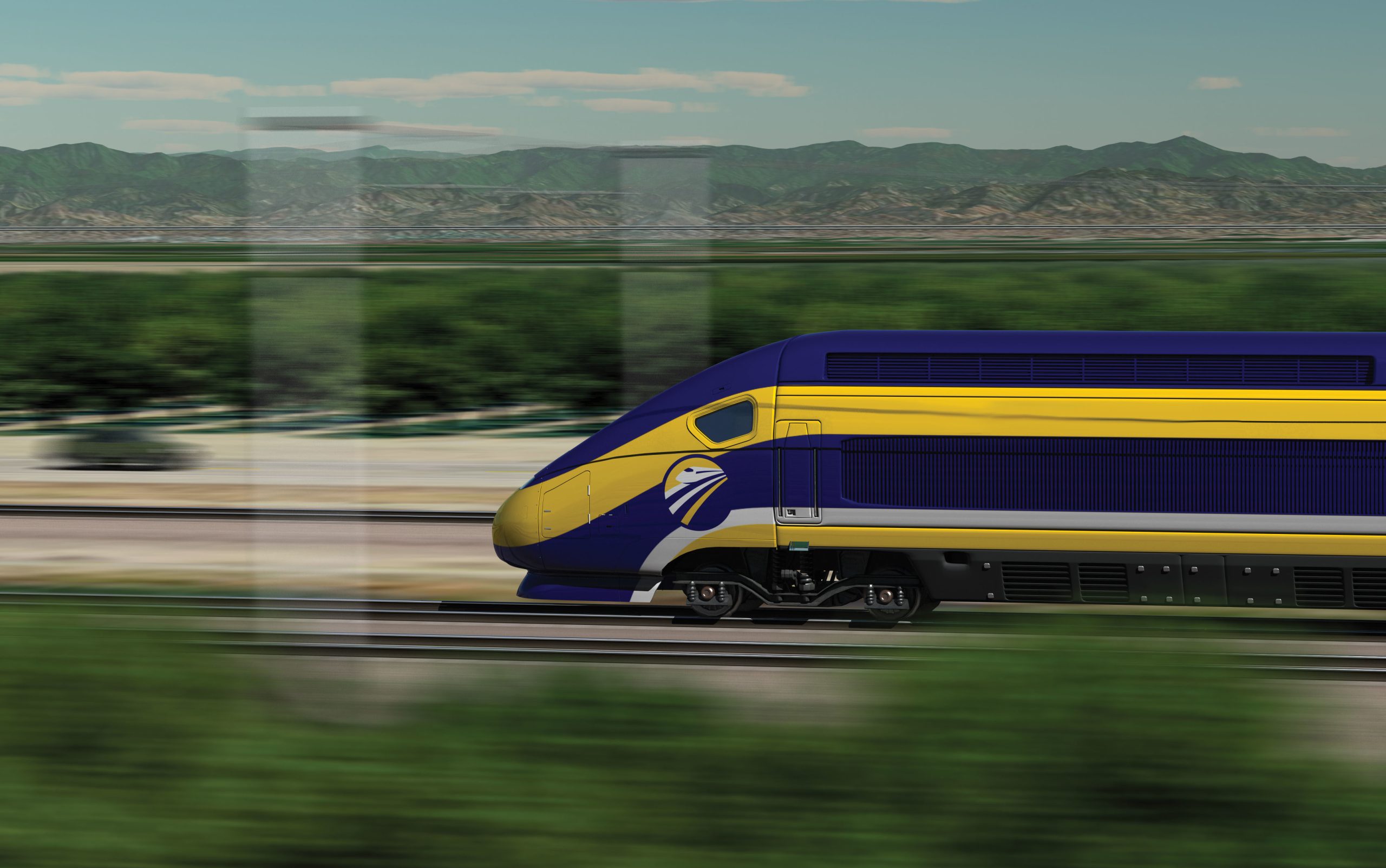Progress. The California high-speed rail project has made progress. If progress can be defined as finally laying the first track for a bullet train that is at least a couple of decades behind schedule.
Hard to put any faith, though, in the promises and bragging when the HSR is running stupefyingly late and about $100 billion over cost.
Gov. Gavin Newsom, who now apparently thinks of himself as a “steel driving man,” spoke recently at a news conference in Kern County as part of his state budget rollout, celebrating the “big damn deal” of the possibility that soon there will be some visible manifestation of the “progress.” To underline the point of “this sacred moment,” he and others drove a few ceremonial spikes into ceremonial ties that support a section of rails that are more a museum piece than the foundation of a high-speed rail line. Or at least they awkwardly tapped at the spikes with their mauls.
None of course are railroad laborers, so we shouldn’t expect windmill swings from them. But the public would be justified in expecting California decision makers to be more realistic, more judicious about the project. Instead, even after spending $11 billion – then promising another $4.2 billion in the current budget proposal – and having virtually zero to show for it, the taxpayers will continue to fund the train. They will have to do this forever if it is ever built because it will never make a profit or break even to pay for itself.
Unwilling to accept critics’ misgivings, Newsom lashed out at the “cynicism” and “all the damn negativity” during the press event shortly after admitting “we’ve substantially funded this project,” acknowledging there is “a gap,” and then promising “it’s not a gap that we cannot close.” But again, the doubters have every right to be skeptical.
One of those is Rep. Kevin Kiley, the Republican from Rocklin. He’s filed a bill in the U.S. House that would “prohibit the use of federal financial assistance for” the HSR. Kiley says the train has “failed because of political incompetence,” and believes “our share of federal transportation funding should go towards real infrastructure needs, such as improving roads that rank among the worst in the country.”
If California has been able to get along without a high-speed rail over the last five or so years (voters were told it would make its first passenger-service runs in 2020), then there’s no reason it can’t go another five, 10, 20 or 100 without it. Yes, traffic is maddening, and roads and bridges are in a sad and dangerous state of disrepair. The solution is to expand and repair – using dollars that would otherwise be wasted on the bullet train. (See Kiley, one paragraph above.)
But the politics of the state are hung up on carbon dioxide fears. With apparently no reservations about cost and feasibility in mind, Newsom boasts that “California is building a clean transportation system for the future,” and that “by 2050, every Californian should be able to choose rail as a way to get to their destination, near or far.” So resources will instead be poured into a project that has been so troublesome that its course and scope have been altered to try to fit a square train into a round tunnel.
Like so much else in California, it no longer makes sense – and in fact hasn’t for quite some time.
Kerry Jackson is the William Clement Fellow in California Reform at the Pacific Research Institute and co-author of The California Left Coast Survivor’s Guide.
(Image Credit: California High Speed Rail Authority)

